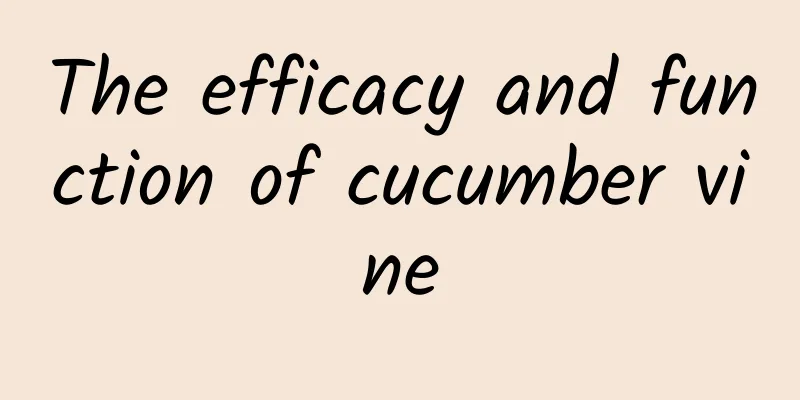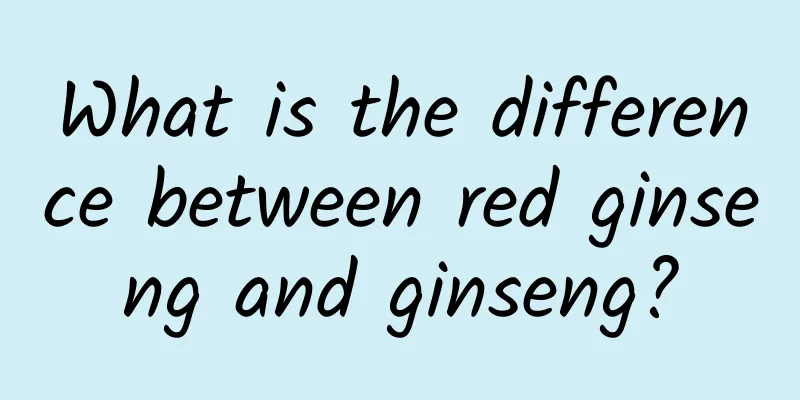The price has plunged 80%. Are Henan folks making so many diamonds just to make everyone affordable?

|
Editor’s Note: Marilyn Monroe once told us that "diamonds are a girl's best friend." However, the price of this best friend has plunged recently, with a 1-carat cultured diamond falling more than 80% from its peak. If you want, you can have more and bigger best friends. China is a major producer of cultured diamonds (also known as artificial diamonds). In 2023, the production of rough diamonds exceeded 22 million carats, accounting for more than 70% of the world's total, and 80% of China's production capacity is in Henan. So, why do Henan people "plant" so many artificial diamonds? Do they want everyone to be able to afford them? In the discussion of "Is it still worth buying diamonds?", one comment seemed to have a rather far-fetched mindset: What is the relationship between diamonds and semiconductors? Diamonds (or the jewelry industry's name for large diamonds) are actually the "king of materials" in the industrial world . They are found in optical devices, cutting tools, and even spacecraft! As for the semiconductor industry (including the chips in your phone), it is the future hope after the end of Moore's Law. Today we will talk to you about diamond semiconductors. Diamond (Photo source: veer gallery) Part 1 Producing colored artificial diamonds is to make semiconductors Unlike the previous artificial diamonds which can only produce very small particles and can only be used on turning tools, drill bits or sandpaper, in recent years, the artificial diamond booths at various jewelry exhibitions will definitely have a variety of colorful diamonds. Why is this? For example, the various real colored diamonds in the picture below completely subvert everyone’s impression of diamonds as colorless and pure. Colored diamonds produced by China North Industries Group Corporation Yuxi Group Zhongnan Diamond Co., Ltd. (Photo source: Weibo @兵工之声) So, what is the reason? Because these white or colored artificial diamonds can be said to be byproducts of artificial diamond production experiments, which are sold to the jewelry industry for recycling and recovery of part of the development investment. Of course, if the quantity required is large, they don’t mind taking orders to produce special color diamonds. So why do these units produce so many kinds of waste, and each particle looks so large? The answers are all in this table. Everything is for diamond semiconductors, carbon semiconductor materials that beat silicon semiconductors. Silicon and diamond both have this tetrahedral crystal structure. (Photo source: veer photo gallery) As an element of the IV main group, carbon also has the ability to be a semiconductor. Diamond, which has the same tetrahedral atomic structure as silicon, has theoretical potential in semiconductors... It is called the "holy grail of power semiconductors". Super high thermal conductivity, greater breakdown field strength, higher mobility, and smaller atomic size all indicate that diamond semiconductors have a very bright future. Part.2 How to make a diamond big enough? Promising doesn’t mean there are no problems. The basic problem facing diamond semiconductors is the most basic material science problem, which is a hard technical problem that does not involve any sentiment or symbol. Everything “natural”, “scarce” and “beautiful” must give way to “performance”. The first obstacle is to be able to obtain a large enough pure single crystal block for processing. Readers can first take out the CPU in their computer or mobile phone to see the size of the chip, and then find a carat diamond ring to make a conceptual comparison of the size. Therefore, those jewelry-grade carat diamonds are not enough to make diamond chips. Therefore, the foundation of the diamond semiconductor industry cannot rely on small natural diamonds. It is impossible, and efforts must be made to open up the technology tree of artificial synthetic diamonds. Small pieces of natural diamonds. These are the large particles that have been screened out (Image source: Veer Gallery) Detonation method Because the carbon tetrahedral network structure of naturally occurring diamonds is formed under high temperature and high pressure conditions deep in the earth, the industry has been trying to simulate this high temperature and high pressure state to synthesize artificial diamonds. The initial method was very simple and crude: BOOM! That's right, it is to use the high temperature and high pressure state formed by the explosion of high-energy explosives to cause the carbon in graphite to phase change under the action of catalysts to obtain diamonds. BOOM! BOOM! BOOM! (Photo source: veer photo gallery) Under the continuous blasting of explosives, a lot of artificial diamonds were indeed obtained. From the wording, everyone can see that the size is too small to reach gem grade and cannot be called diamond. Artificial diamonds produced by the detonation method are generally fine and broken, and cannot be called gems. They can only be used for drill bit inlay or even as abrasives. Therefore, the detonation method faded out of the main trunk of the industrial diamond technology tree. Domestic hinged six-sided press (Photo source: Guanchazhe.com) High pressure method Another method is to use a mechanical top press to achieve high pressure, and then use electric heating to form high temperature. The catalytic phase change in the high temperature and high pressure environment converts the carbon element into diamond. This is also the mainstream technology for producing artificial diamonds. Moreover, compared with natural diamonds, the size of artificial diamonds produced by the press method has been quite large from the beginning. The size of artificial diamonds that entered the Chinese market about 10 years ago started at 0.5 carats, and the largest could reach 3 carats. The diamonds pressed out by the press can already be well used in the production of superhard cutting tools and other links. In the early years, the production cost of artificial diamonds produced by a foreign company was about 60% of that of natural diamonds. With the support of the six-sided press technology independently developed by my country, the cost of domestic artificial diamonds has become the lowest in the world, and the output has reached more than 90% of the world. It can be said that the argument in the jewelry circle that "artificial diamonds are not good" is almost certainly directed at the massive amount of cheap and good domestic artificial diamonds. The mechanism of graphite transforming into diamond under high temperature and high pressure (Image source: Guancha.com) CVD (Chemical Vapor Deposition) Growth Method The detonation method has another disadvantage. The nitrogen rich in high-energy explosives is doped into diamonds, making the color of diamonds yellowish, which makes them unpopular in the jewelry market. Of course, drill bits and precision machining tools do not care whether the diamonds at the blade or tip are white or yellow, but if they are used for chips, excessive nitrogen is not acceptable. Similarly, the production of presses will also bring more nitrogen into the diamonds, and the size of the diamonds produced is not conducive to obtaining large-sized discs, so this is also not good for semiconductor processing. The current diamond semiconductor technology tree has turned to the CVD growth method. The basic concept is to directly deposit carbon atoms on a diamond substrate produced by a press to "grow" a piece of diamond. The raw gas of CVD is methane or acetylene gas. After decomposition, carbon atoms are deposited on the substrate, and the resulting diamond material is very pure. It can be completely transparent and almost free of impurities. Pure diamonds can meet the high-purity diamond materials required for semiconductor industry production, not to mention jewelry. Artificial diamonds produced by the Ningbo Institute of Materials, Chinese Academy of Sciences (Photo credit: taken by the author) Another thing that is friendly to semiconductor production is that the diamond produced by CVD is from thin film to thin slice to thick slice and then to block. It can be customized according to the needs of production, so it gets rid of the trouble of irregular particles of natural diamond raw stone. As for the size of the production... At present, more than one company in the world has achieved the production of diamond discs above the inch level. Referring to the size of the men's watch dial and the CPU cut out above, the size of a 1-inch disc is enough to cut chips. At this time, even if the produced diamond slices cannot be directly used in semiconductor production, they can actually be used in the semiconductor industry - as chip substrate materials. Do you remember the thermal conductivity data on that table? The thermal conductivity of diamond is more than ten times stronger than that of silicon materials. It is the best known heat dissipation material, even better than the silver in the high-grade thermal grease that you are reluctant to use more. Such a good thermal conductive material as a chip substrate is a great blessing for overclockers. Whether it is using silver-containing silicone grease, heat pipe water cooling, liquid nitrogen or taking the risk of liquid metal, isn't it to dissipate the heat inside the chip as soon as possible. The heat dissipation capacity of the chip itself is greatly enhanced, especially the enhancement of the ability to resist local overheating, which can greatly increase the allowable power limit of the chip. Whether it is used for CPU/GPU computing or T/R modules for AESE, it is undoubtedly very good news. Part.3 Don’t you want to make pure diamonds? If diamond is to be used in semiconductors, it faces a second problem: doping. If silicon is to be used in semiconductors, it needs to be doped to obtain P-type and N-type materials. How could carbon crystals, which are also group IV elements, be an exception? P-type doping of diamond semiconductors is as necessary as N-type doping. At present, there are several relatively mature processes for P-type doping, which can be achieved by injecting or doping boron into diamonds to obtain P-type semiconductor chip materials. However, the current obstacle is doping to obtain N-type semiconductor materials. Once the problem of N-type doping is solved, it will be the time to open up the technology tree of diamond semiconductors. When it comes to doping, various experiments are naturally indispensable. From different theories, the methods of N-type doping tried by researchers are mainly the following: nitrogen doping, phosphorus doping, lithium or sodium doping, oxygen or sulfur doping and other element doping (such as potassium, magnesium, beryllium, arsenic and other elements), and of course co-doping. In addition, how to implement doping, such as adding during CVD, or re-injection, or diffusion from the substrate? . Just looking at this series of schemes will make you feel dizzy, not to mention the poor experimental dogs... However, smart readers must have thought that different production, doping and processing processes will definitely affect the overall color of diamonds. So among the numerous failed experiments, if we are not obsessed with obtaining N-type semiconductor materials, we can naturally select some solutions with stable and beautiful colors for the production of jewelry-grade diamonds. This is why the strange domestic artificial diamond companies have a lot of natural rare colored diamonds, and the particles are large, flawless, high in clarity, uniform in color, and most importantly, cheap. Part 4 Conclusion Due to the ultra-wide bandgap of diamond (5.45eV), as well as its advantages such as high sensitivity to radiation damage and low dark current, it has now become the material for particle detectors or radiation detectors working in extreme environments (such as nuclear reactors, tokamaks, laser fusion experiments, outer space, etc.). Let’s let go of ourselves and imagine the future like this: Person A: "Look at my big diamond ring!" B smiled and picked up the micro single camera: "See the screen? It's made of diamonds!" Unscrewing the lens: "See the full-frame sensor? It's a diamond!" Then he raised the camera: "See the lens? It's made of diamonds!" Yes, the refractive index of diamond is also much higher than that of optical glass... Finally, a piece of advice to all readers: Famous jewelry designer Schlumberger believes that diamonds lack human touch and has always avoided using them to show wealth: "You might as well put a check on your lapel." Before you buy diamonds, think about this sentence. Source: Science Institute |
>>: Year-end physical examination, @diabetics: don’t forget these 3 screenings
Recommend
Do you know the nine benefits of mulberry leaves?
my country is the earliest country to plant mulbe...
Because of it again! A girl was admitted to the ICU with a skull fracture. Don’t use this “deadly internet celebrity jewelry” anymore
For girls with long hair, the most indispensable ...
It can grow a new head even if it's missing! Why is the "Axolotl" so amazing?
If you love to visit flower and bird markets, you...
The efficacy and function of sea mango
There are many common Chinese medicinal materials...
The efficacy and function of litchi root
Lychee root is a very common Chinese medicine. Al...
What are the effects and functions of Acanthopanax senticosus
Chinese medicine is a unique medicine of traditio...
Russia's underwater natural gas pipeline was blown up, leaking a large amount of methane. Will this affect the world's climate?
On September 26, local time, explosions occurred ...
The efficacy of Xinkaihe ginseng
Medicine is very common, and it is very helpful i...
The efficacy and function of radix scutellariae
The treatment of diseases also requires good trea...
Eating the wrong oil may promote breast cancer? Which cooking oil should I choose?
Recently a friend asked me: I just saw a scientif...
How did the chicken, a “little cowardly bird”, conquer the world step by step?
© JOHN TOWNER Leviathan Press: What's your fa...
Can ordinary people go into space and see the universe?
With a deafening roar, the rocket took off, and t...
The efficacy and function of acacia root
The world is full of wonders, and Chinese medicin...
The efficacy and function of Artemisia scabra
There are many types of Chinese medicine. When we...
Riding on a log, ice skating, dragging an ice bed... the ancient people's "Winter Olympics" were actually like this!
2022 Beijing Winter Olympics Attracting the atten...









